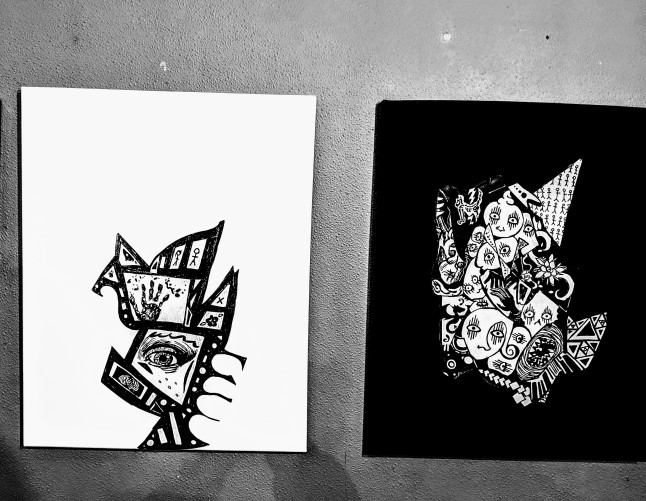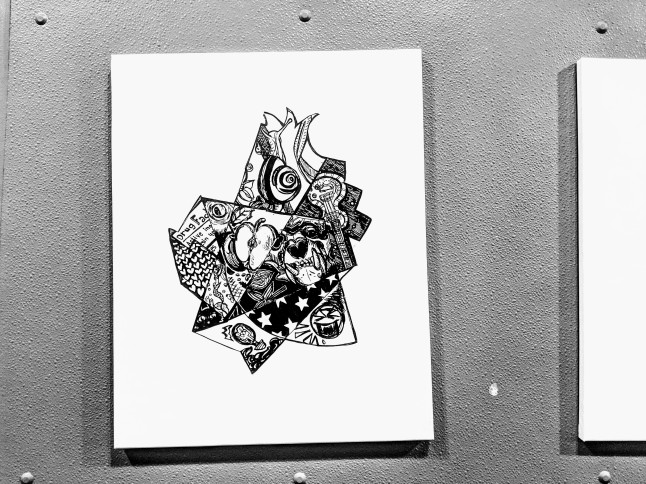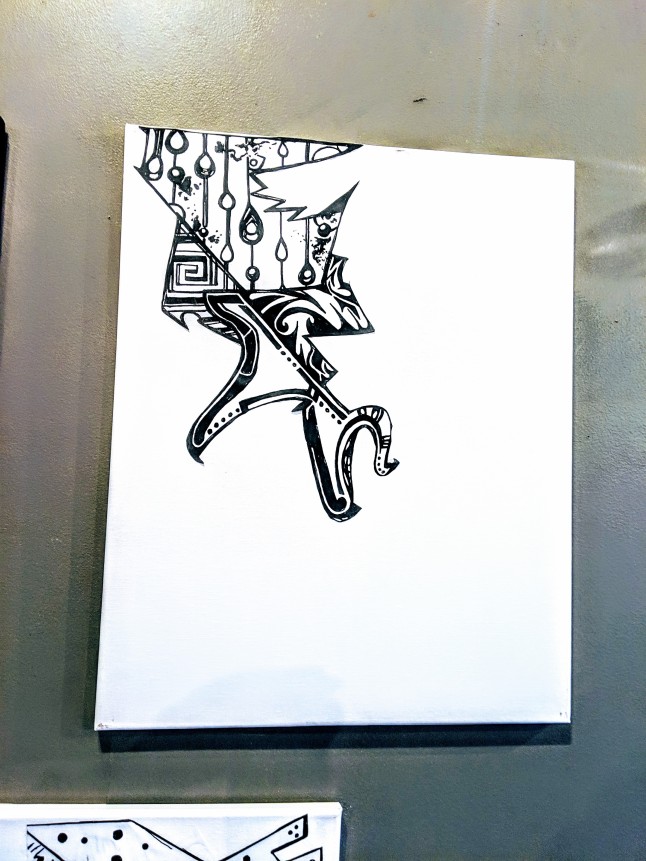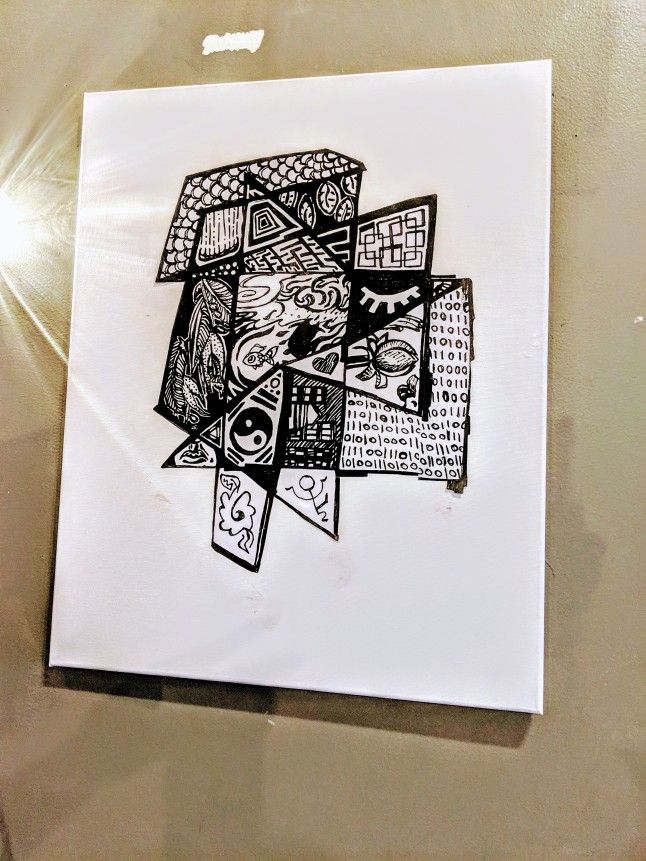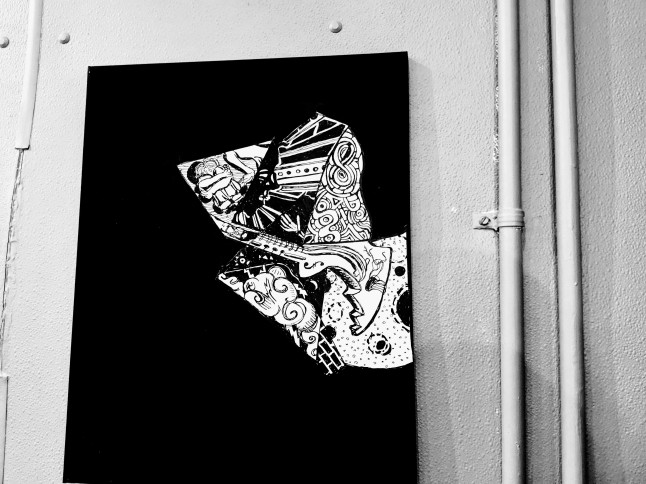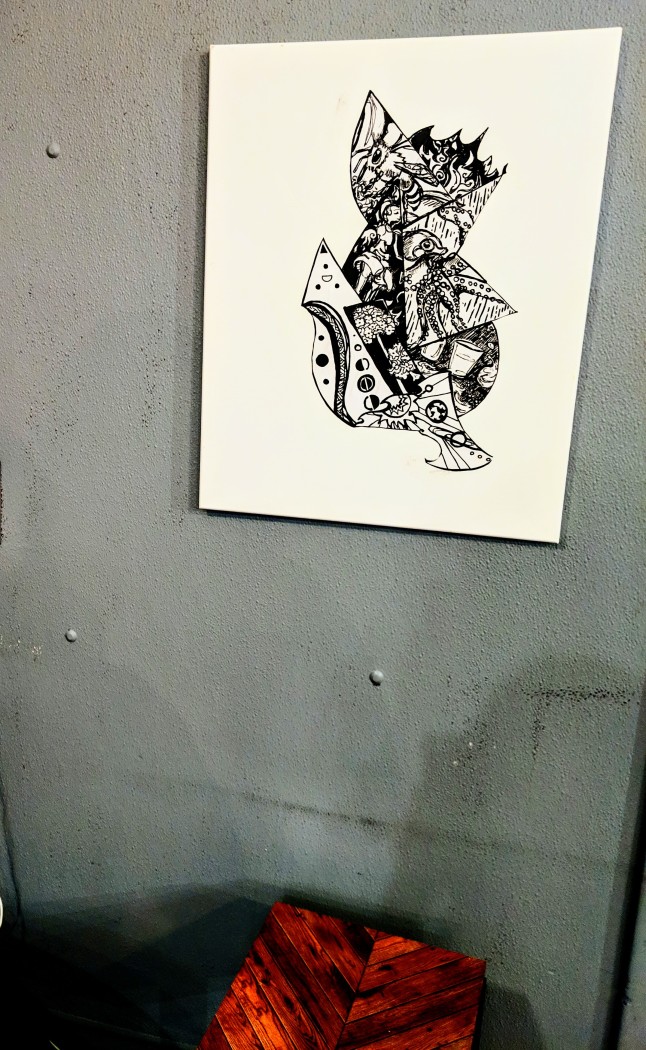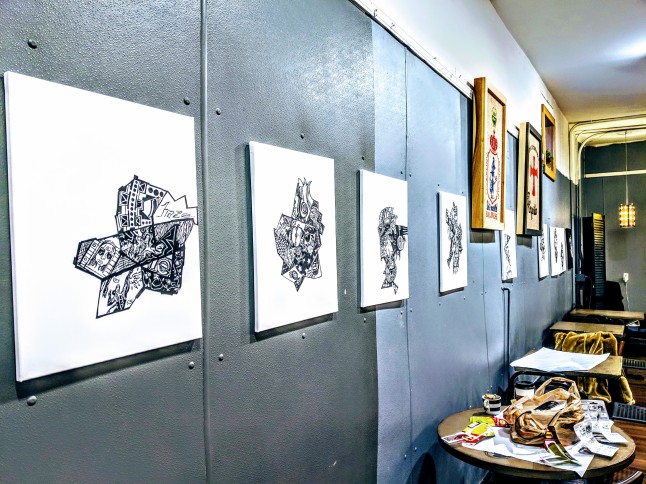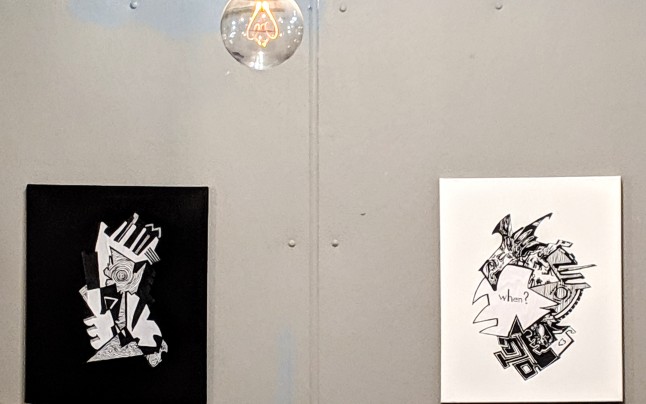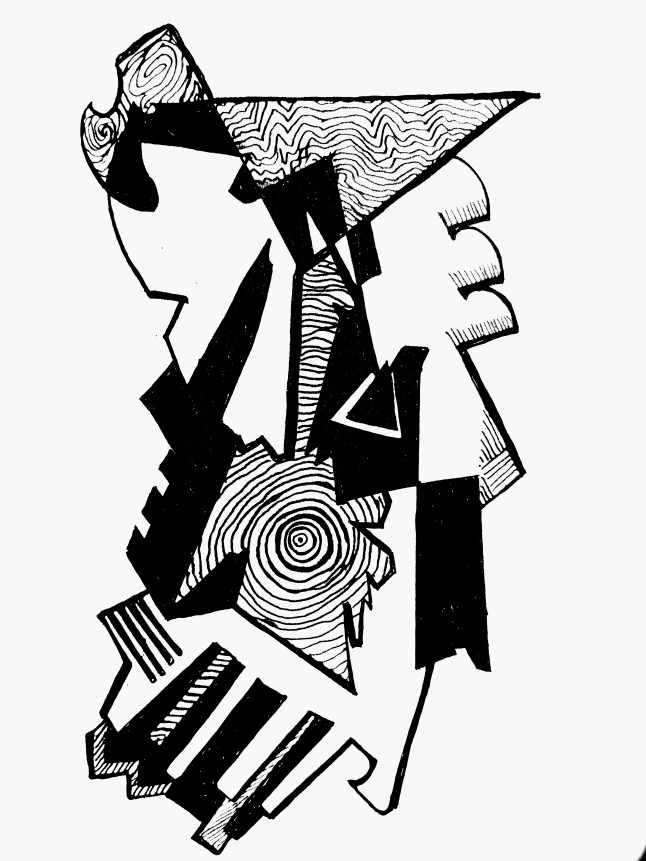Something I’ve been thinking on a bit. I was hoping to find a question along the lines of, “is there such a thing as toxic femininity?” because it’s something I’ve been mulling over in my head. However, these questions don’t seem to be currently active.
I know a lot of people who’ve been abused by women. Often their own mothers; sometimes, their wives or girlfriends. I have begun to see in people I love the kind of damage this kind of abuse causes, for years on end— a sort of poison that seems to cause just as much suffering as abuse by men, but harder, in some ways, to see for what it is. So, the poison from this kind of abuse sinks in deeper before anyone has a chance to discover it and root it out.
Before I get too far afield, I want to define my terms:
There’s a difference between masculinity and toxic masculinity. Masculinity is good, or at the very least, neutral. Toxic masculinity is when a good thing becomes corrupted. Likewise, toxic femininity is when a good thing, or potentially good thing, gets twisted and turns evil.
Like, a good element of masculinity is the strength to protect vulnerable people. Or, strength in and of itself! I’m a fan of martial arts, and it can be very beautiful and, well, artistic. It is also masculine. A woman who excels at martial arts is great athlete— and still a woman!— who is celebrating her masculine side. Likewise, my high school football team has a female kicker, and she rocked! Didn’t make her less of a woman, but she and the male football players were doing a masculine activity.
Male and female athletes and martial artists are engaging and impressive to me. I myself am terrible at sports, and, full disclosure, am sometimes insecure at how I’m not great at either feminine *or* masculine activities. In the spirit of honesty, I find people of any sex who are greatly masculine to be very attractive, while I myself, female-sex, want to become more feminine.
I have fallen for Manly Men, Cool Butch Motorcycle Ladies, and Non-Binary Cuties in cargo shorts and nose rings. Yet, I myself love wearing dresses, padded bras, vibrant colors, love sitting and reading or drawing for hours, enjoy engaging with people in long conversations, find fulfilment in tending to people’s feelings and find work as a crisis counsellor part of my calling. If there’s a 1–10 scale where 1 is completely masculine and 10 is completely feminine, I’m like an 8.
But, damn, my type is the opposite of that.
Before I get to what I mean about toxic femininity, I want to talk about firefighters for a minute.
Firefighters: almost universally considered sexy. I’ve got a YouTube playlist of firefighters rescuing cats, dogs, puppies, etc. I’ve never met a male-attracted person who’s like, “Nah, firefighters are just okay.” They’re great. Tough guys and tough ladies risking their lives to do a heroic thing! They’ve got axes, an amazing combination of precision and strength, and inevitably a raunchy sense of humor that never becomes cruel.
Likewise, among people who are attracted to men, almost everybody likes Channing Tatum. He’s able to play sex-appealing characters in films like Magic Mike and, heck, even Pink’s music video for Beautiful Trauma. He often flirts with feminine aesthetics, but it’s because he’s so unalterably masculine that he doesn’t find glitter threatening; a glittery Channing Tatum is still 100% manly, and he knows it. That confidence is pretty sexy. Also, he often plays characters who are rough-around-the-edges but deeply good-hearted.
Contrast this with masculinity’s evil twin. Toxic masculinity is like seeking out the heroes and firefighters and Channing Tatums of the world in the shadowy Upside Down in Stranger Things. There was this perfectly lovely thing…and it got broken.
A corrupted masculinity, or toxic masculinity, is someone using their strength to bully or abuse someone weaker than them. A woman who embraces her masculine side, and then uses that to bully or abuse people, is also engaging in toxic masculinity, just like if a man does it. It’s about using violence, rage, or the threat of violence to take power and take control.
It’s the opposite of Channing Tatum’s confidence: it comes from a fear of being seen as weak. And by giving into the fear, the cowardly side of strength ensures that people *know* his power at all times, because they can feel his wrath. He doesn’t have to face his fear that someone might leave him— even though that’s a risk in literally every relationship ever— because he will punish them with anger or violence if they even *think* of trying, if they so much as want something other than what he wants.
Women can do this too— they can embrace their masculine side, and then indulge in poison or corruption. But, this happens less often. When women abuse, it usually looks different.
So. Okay, so there’s this corrupt version of masculinity that causes a certain kind of aggression, violence, and abuse.
But, non-masculine women also abuse. Far more often than people want to think. I’ve seen it. It’s bad. So where is that coming from?
Let’s look for women in the Upside Down: toxic femininity, or corrupt femininity. Think Regina George in “Mean Girls.”
But first, what do I mean by femininity in the first place?
Femininity can be good, because it is a gentle way of relating to people, and it lets people open up to you. Femininity makes people great at jobs like social work, counseling, teaching. It can also be a feminine aesthetic.
When I pursue and celebrate my feminine side (which is, uh, most of me), I’m very aware of how much more emotionally vulnerable people are with me than they are with my more masculine peers. Even when I’m not at work, strangers will talk to me or open up to me. Is there an opposite of Resting Bitch Face— maybe Resting Nice Face? If so, I have it, which is part of what I enjoy about femininity. This gives me a kind of power— power over the heart. Like with all power, just like the power of physical strength, this power comes with great responsibility.
It also gives me a kind of freedom! There is a degree of, let’s say quirkiness, or eccentricity, that I’m allowed that would be seen as more threatening in a masculine seeming person. I can sketch or knit during class and it’s seen as cute, rather than disrespectful or “ADHD,” even if there are male students who would equally benefit from something physical to do with their hands at school to pay attention better.
There are pointed things I can say that people will take better than they can take from a masculine person, because from me (or from a gay dude), it’s “sassy” and “funny but true!” whereas from a masculine person is seems like a serious, harsh critique— so the person being criticized is likely to argue and get defensive, or feel demoralized.
Just like women can embrace their masculine side by playing football or doing martial arts, men can embrace their feminine side by doing feminine activities or careers.
As someone who has been hospitalized a lot, I have good memories of nurses who were very kind to me, and made a painful situation more bearable. Some of those nurses happened to be men; they really were soothing and attentive, even when I was embarrassed and upset. I believe these men had a real gift, and I’m glad that they chose to embrace that gift rather than avoid nursing because it’s not masculine enough.
So, that’s what I mean when I talk about femininity. It’s a personality trait that mostly women have, but men can also embrace. It’s both a way of being and a way of relating to people. It’s powerful, just like masculinity is powerful, and that power can be used for good or evil.
Toxic Femininity
Corrupt femininity is like toxic masculinity: it takes a good thing and makes it bad. In “Mean Girls,” Regina uses her femininity to gain people’s trust, then exploits that trust by insulting them in ways she knows will hurt them, or spreading false-but-believable rumors about them to smear their reputation. This is aggressive bullying, but it’s a specifically feminine kind of bullying.
Femininity gives people power. It’s a different kind of power than physical strength or aggression: it’s power over the heart, rather than over the body.
The abuse of the power of physical strength, the masculine power, is something most people can recognize by now. We see someone hitting, yelling, cornering someone, physically blocking them from escaping of leaving a room, and we say: That’s Abuse.
Nowadays, it seems like we’re getting better at recognizing that these actions are still abusive when women do it. People are beginning to understand that there are cruel women who embrace masculine power as a tool to control, belittle, and abuse the people they claim to love, or the people they work with. If a woman berates someone and blocks the door so the person can’t leave, or even threatens the person with violence, we are, fortunately, becoming increasingly aware that this is abuse.
But what about abuse of feminine power?
Unfortunately, abuse of feminine power is still considered less serious, even though it is incredibly damaging and destructive. Some people who were emotionally or psychologically abused by women, especially if the abuse happened when they were kids, carry the damage with them their whole life. Not only have I met people who cannot completely heal decades later, but they also face the stigma that they were not genuinely abused, or “should have” been able to “take it,” because their abuser is a woman. They “should be” stronger than her.
This is because people in general— of all genders— misunderstand, or deny, the incredible power of femininity. If femininity isn’t powerful, then the power cannot be corrupted, right?
But femininity is powerful. It just doesn’t “look” powerful by the standards of, say, Hollywood superheroes or epic fantasy novels. It would be a boring movie if the hero rescues someone by, say, having a lot of conversations with the person, or giving them a hug, or encouraging them to explore their artistic dreams. It’s just not interesting to watch. But: it happens every day. Lives are saved by uncinematic, feminine heroes as often as they’re saved by masculine warriors and captains.
Part of what makes femininity powerful is that it is disarming. If action movies have led us to believe that power = scary / exciting, then it makes sense that people are oblivious to how femininity of powerful. True story: six years ago, I opened up about struggling with suicidal ideation to my doctor, a woman. She is a very calm, un-exciting person. A movie about her would probably be kinda boring. But, she saved my life.
I was able to open up to her because I felt safe in her office, rather than scared. It didn’t feel like a battlefield or a competition or anything exciting. It felt like, you know, a blandly pleasant doctor’s office. She comforted me, recommended a therapist, and prescribed me the medication that saved my life.
Can you imagine the potential destruction she could have caused, if she were cruel, or abusive?
What if she decided she wanted something out of me? She could mock me for the thing I’m most insecure about. She could push me over the edge. She could withhold treatment until I did what she wanted, gave her money or sex or something; she could make me believe the she was the only person who could possibly heal me from the shameful thing I revealed.
A masculine person would not have this power over me, because I wouldn’t have opened up to a masculine person in this context. Even a masculine person whom I love and trust; when struggling with mental health issues that make me feel vulnerable, I naturally seek out feminine people first to talk to.
My doctor, like most people, isn’t abusive. She got me the help I needed.
But let’s say 4% of people are abusive* They give into their fear of the things in life they cannot control, the pain they cannot anticipate, so they make cruel, cowardly choices to control those around them. Or, they are sadists. They enjoy inflicting pain on people, and try to create situations where they can do this as often as possible. They rationalize their sadism with a mental image of themselves as wise and authoritative, doling out righteous punishment, rather than understanding that they simply thrill in power.
We can recognize the abuse of masculine power in the 4%. But can we recognize the abuse of feminine power in the 4% of feminine people who abuse as well?
I think most people can’t. And that’s causing some seriously dangerous situations.
The book ‘Will I Ever Be Good Enough?’ is for adults who were emotionally abused by narcissists in their family, and are still dealing with the psychological trauma and relational problems decades later. The subtitle is “for daughters of abusive mothers,” but it has been helpful for many people stuck in the thrall of an emotional abuser.
Like Regina George, an emotional abuser knows exact what insults will crumple their victim’s self-esteem, so their victim will be willing to do *anything* to win back the abuser’s affection or good graces. Common insults are things like, “you are such a burden” or “I wish you had never been born.” The narrative is that the victim is too stupid, weak, or useless to do anything right; the abuser convinced the abused that they *need* them, that they might literally die without them— even if the opposite is true. The abuser will use details that are intimate and painful to craft a lie the abused will believe about themselves.
People who had cruel parents in this way find themselves trapped in many different ways. They’ve learned helplessness, so they can’t solve many problems. They fear rejection so intensely that they overreact to small rejections, or make a point of rejecting others first (be it people, careers, or other dreams) so they don’t have to face rejection again. Without a sense of our own basic decency and competence— let’s say moderate self-esteem—built by emotionally loving, stable parents, everything in life that involves facing rejection becomes overwhelming.
Rebuilding that self-worth and self-love from scratch as an adult is possible. But, it can be an uphill battle, and facing the wounds in one’s own psyche can be all the more stressful and isolating due to their invisible nature. It can make the abused return to the abuser over and over, because on some level they believe its the only option.
Falling in love with someone who abuses a feminine power can be like getting trapped in a gambling addiction.
The person is so flashy and shiny, and the first time you did something loving for them, they rewarded you with a shower of affection— you hit a small jackpot! Nobody has ever met your emotional needs like this before, much less let them overflow into pure joy. They see something deep inside of you and tell you how lovely it is. They spend half the day with you and you alone. They make you feel sexually empowered.
Everything is happening so fast! You want to tell them literally everything about your life, everything you’ve never told anyone, because suddenly it feels amazing, like some great weight is lifted off you every time you’re around this person. You might literally actually fly off the ground.
[Also! If you feel this way upon entering a new church or religion, be careful: they could be a cult. In a religious setting, a group of people organizing scenes designed to create feelings of euphoria is called ‘love bombing,’ and it is a way of getting someone to give up control of their life over to the religious leader. Don’t want to get on too much of a tangent about religious abuse, so I’m just going to leave this here to google if you want to. Okay, back to toxic femininity].
The next time you go out on a date, though, or try to talk to them, they’re distracted. Cold shoulder. On their phone. They don’t reciprocate your love this time.
So, you try harder.
They tell you they want something from you. You give it to them. You get a small reward of affection, but not nearly as much as before.
Every once in a while, your love and affection is reciprocated— maybe even tenfold; the shower of attention and affection from this person is like magic!—but usually it isn’t. Like a gambling addict, someone in love with an emotional abuser thinks if they keep putting more and more of their time, energy, and affection into the person, they’ll get that amazing, loving feeling again. But the abuser / slot machine has figured out the bare minimum amount of reward to keep the addict hooked.
You think if you keep giving them more of you, more of your money, more of your heart, more power over your life, things will once again feel like they did before. Like the scene in Mean Girls where Regina’s admirers and frenemies talk about her to the camera (“Regina George hit me in the face once; it was awesome.”) it can be difficult to see that this person is just using you, that they don’t actually like you, because between the million-dollar feeling and your low self-esteem otherwise, the reality of how badly they treat you becomes obscured.
Worst case scenario? They get bored of you. Irritated by your continued affection, by the fact that you want them to meet your needs when they just don’t feel like it, or by some preference or whim they dislike something about you. So: they punish you.
They know everything about you. They know what hurts. They know how to humiliate you, how to ruin you. So they do.
The end stage of emotional abuse is devastating. If the abuser is truly sociopathic— or, at the very least, they have so thoroughly dehumanized the abused that, in their mind, their victim does not deserve any empathy because they are not as much a person as they are a tool— this last stage can lead to the humiliated victim in severe crisis, often evoking a suicidal impulse. If this is done with truly malicious intent— as I personally have witnessed— I would be fine with calling a spade a spade here: attempted psychological murder.
Abusive women might also abuse their female friends; many women in a social environment dominated by a toxic feminine friend internalize that this is a “normal” way to handle things, even if they think its wrong.
In my personal experience, I’ve had to cut a friend out of my life because she was abusive and used her femininity as a weapon. She played the “hot-and-cold” game, not just with the men she was interested in, but with her female friends.
Just as people don’t always recognize toxic femininity or feminine abuse, people also are less likely to acknowledge the harm from abusive friendships that are emotionally close but aren’t sexual or romantic. While it’s true that, with an abusive friendship, it can be much easier to escape once you realize you need an out, the abuse itself can be as seriously damaging.
If you find yourself in an abusive friendship, this might be a good read. I bring this up mainly because I’ve noticed that, being in the periphery of an abusive woman, or being in her friend group, gives non-abusive women skewed ideas about what is in the realm of “okay ways to treat people.” It’s embarrassingly easy to think, “Well, I would never treat someone like that, but I guess she’s so popular and people keep dating her, so what she’s doing must not be a big deal.”
Which can lead to someone trying to talk to a woman about being abused by another women, and they get sort-of a *shrug* response in return. Because it happens enough that it gets normalized. This denial of the severity of this kind of bullying or abuse, on others or in yourself, can create a wall that keeps people from healing, even after the abuser is well out of your life.
Abuse of feminine power can escalate to physical abuse, sexual abuse, or neglect. But, because it is harder to see this escalation, it can be harder to escape this abusive situation than escalation of masculine abuse.
While Emotional abuse is bad in and of itself, the increasing emotional humiliation and degradation of emotional abuse can force the victim to believe they are worthless, setting the stage for unlimited escalation. A caregiver who humiliates someone can get their victim to a point where they will never ask for help, because they believe they don’t deserve it.
More children, elderly, and disabled people die at the hands of female abusers than they do at the hands of male abusers. 71% of children who are victims of homicide are killed by their mothers— not their fathers, and certainly not strangers. Cases of Munchausen by Proxy, a rare personality disorder that seems exclusive to women, are staggering in the creativity of their cruelty: women with this disorder poison or cut or otherwise harm their own children in order to take them to hospitals and emergency rooms, so they can act out a role of a martyred mother. Less severe cases involve a mother not harming her child, but lying and exaggerating symptoms at a doctors’ office.
This is a clear case of a typically positive feminine identity— a mother— being warped by an abusive tendency. The reason munchausen by proxy doesn’t exist in men, or at least not enough to be statistically significant, is because the disorder itself is a corruption of a feminine aspect. While more and more men are either embracing the feminine aspect of parenting, or putting a positive masculine spin on being an involved dad, there is no male counterpart to the feminine Martyr Mother; thus, there is no corruption of masculinity that causes men to poison their children.
On the other hand, it is much rarer for women than men to succumb to murderous impulses— 89.5% of homicides are committed by men— because murder is, largely, a corruption of a masculine identity (like a superhero who slowly turns to the dark side).
Can anything be done about toxic femininity?
The root causes of feminine abuse is the same as the causes of masculine abuse: cowardice, arrogance (feeling entitled to take out poor feelings on someone, feeling entitled to luxury or whatever pleases the person at the expense of their victim’s suffering), or sadism. It is only different in how these traits manifest in someone’s overall personality; it is not different in severity.
Some of these underlying causes can be addressed if the person really wants to change. But, often, the person gets what they want from abusing. Why would they change? Focusing on trying to change toxic people, feminine or masculine, is an effort in futility. People only change because they want to change, when they’re ready.
The best way to address toxic femininity is to start with yourself. If you’re a feminine person, ask yourself: Do I understand the nature of my power? Am I using my power wisely and responsibly?
It’s okay if right now the answer is, “I don’t know.” Often, feminine people genuinely do not understand they have any power in their femininity, either to use for good or evil. I’ve talked to women, cisgender and transgender alike,who genuinely believe that to embrace their feminine self is to say they want to be powerless. If this is your mindset, it’s going to be hard to make wise choices. And it’s also going to give your self-esteem a beating! There’s nothing, absolutely nothing, wrong or powerless about femininity.
Once you realize how powerful femininity is, or the potential power of your feminine side, then take some time for introspection. How are you using your power?
Then, think about women you admire: what appeals to you about them? Are you downplaying some of their toxic traits so you can keep enjoying their company? What about feminine people in your life who are non-toxic? Are you admiring and celebrating them? What about masculine people in your life? Are you drawn to feminine power, even toxic femininity, because masculinity is scary to you?
These questions don’t need answers right away, and there are likely going to be different answers for different people.
Finally, think about how to support the victims of feminine bullies and abusers. Do they need immediate help escaping an abusive mother, partner, or caregiver? Can you recognize the signs if that’s the case? What steps can you take to get them to safety?
If the abuse or bullying is in their past, how might you show your friend you acknowledge their pain, accept them for who they are, and don’t judge them for being a target of abuse?
Again, these are questions with a variety of answers.
Do men ever use feminine abuse tactics?
Yes, although it’s much rarer. Just like some women who embrace their masculine side also embrace aggression as a way to take power over others, some men who tap into their feminine spirit wield their newfound femininity as a weapon of abuse.
However, to my mind, I don’t think the percentage matters. What matters is the conversation—or, so far, the lack of it— about what it looks like to be abused by a feminine person, and what the effects are. Actually, if someone reads about toxic femininity, and they realize that their male partner or a man they know is pulling these shenanigans: good! Because maybe that means this is something we can recognize as genuine, dangerous abuse, even if it has feminine aspects rather than masculine aspects.
What if this makes me feel like abusers are everywhere; I literally can’t date anyone, of any gender, wihout risking abuse? Is there any good news about toxic people?
The good news is, most people are NOT abusive; Most people— feminine or masculine—try to be courageous, lovely, and kind in their relationships, in the best way they know how.
If you went to a highschool with 1,600 people in it (like I did), then maybe you had the misfortune to interact with, befriend, or date one of the 64 abusive people in your school.
That’s a lot of potential abusers, and it’s likely they got around! Abusers are often socially noticeable, and might even be popular or high status. And things don’t change much in the adult world. Maybe you had abusive parents, or one abusive parent, and you’re either trying to deny its effect on you, or other people have dismissed your experience, making it challenging to heal and move on to healthy relationships.
In my experience, so many women are afraid of men, or angry at men, and so many men are afraid of women, or angry at women, because we are all trying to protect ourselves from being harmed.
I have seen people try to talk about their genuine personal experiences, only to have this rejected as an argument turns into a “battle of the sexes,” where people just see the other kind of person as a stereotype because of pain in their past. Maybe they demonize all feminine people as manipulative, cruel, duplicitous abusers. Maybe they begin to believe that all masculine people are angry, violent, heartless control-freaks.
But neither of these things are true.
I want to see everyone wholly. I want everyone to see each other, and celebrate the good in each other— even the kind of good that isn’t in us!
I will never have the goodness that comes from heroic, masculine strength. Nor will I ever be completely, 100% unafraid of abuse of masculine power. But, fear only means I have the choice to be cowardly, or to be brave. I will choose to be brave, and keep dating and loving and falling for masculine people, and trying to see each person as an individual.
Likewise, there are people who have little in the way of a feminine side, and have a lot of fear or anger toward feminine people. I get it, I really do.
I hope that, even reading all this about toxic femininity and abuse of feminine power— if you have experienced feminine abuse, and now you are afraid of feminine people— well, actually, first I hope you are able to find a good counsellor or even a friend who can help you deal with your pain and possible trauma. This is good work, something to be taken up in all sincerity. Everyone who has dealt with abuse deserves the space and companionship that will allow them to heal. It’s important to take whatever time you need to heal from abuse or cruelty.
But, second, I hope you will be brave too!
If you love, or fall in love with, feminine people, and yet you have experienced emotional abuse or feminine abuse of the heart, please be brave.Date and relate to women or feminine men you like with courage: they are not the person who abused you. They are someone new, and with new people comes new hope for love and understanding.
As soon as you hear yourself thinking, “All women are _______”, stop yourself. That’s not your true thought; that’s the voice of your pain, your fear, and your past.
Your truest self is brave, wise, and open-minded.
I am trying to do the same thing myself, with masculine people. I too have a voice of fear in my head, and tells me I should stop trying to find love or friendship with men. It tells me, “Every man will hurt you; all men are toxic.”
But this isn’t true. Fear is a liar.
The truth is, everyone is a whole, unique person. Every relationship has unlimited potential— for love, for passion, for creativity, for security. And, simultaneously, for heartbreak, for harm, for abuse.
That doesn’t mean I stop trying. I hope you keep trying too.
A final thought…
All these conversations are important. Nuance is vitally important. Seeing people as whole people is important, and listening to your friends or family members when they talk about abuse, without judgement until we’ve heard them out all the way through, is important.
This is especially true if you realize they are asking you for help to escape an abusive situation. If someone is asking you for this aid, try to do what you can without judging them for the gender of their abuser. Don’t get defensive if their abuser is the same gender as you, and don’t buy into the stereotype that feminine people have no power to abuse.
Finding love after abuse can be very challenging. It can feel like everyone else has their sh!t together, and you’re the only one hurting in this way. But, I guarantee, you are not alone.
_____
*So, as you might imagine, the stats on “what percentage of people are abusers” is basically impossible to figure. Four percent is my guesstimate based on studies of criminal sociopathy in various populations, rates of mothers who abuse their children, rates of abuse of elderly and disabled people (often overlooked in domestic violence statistics, since often these victims aren’t in the same home— domicile— as their abuser), and domestic violence and abuse statistics in Great Britain.







